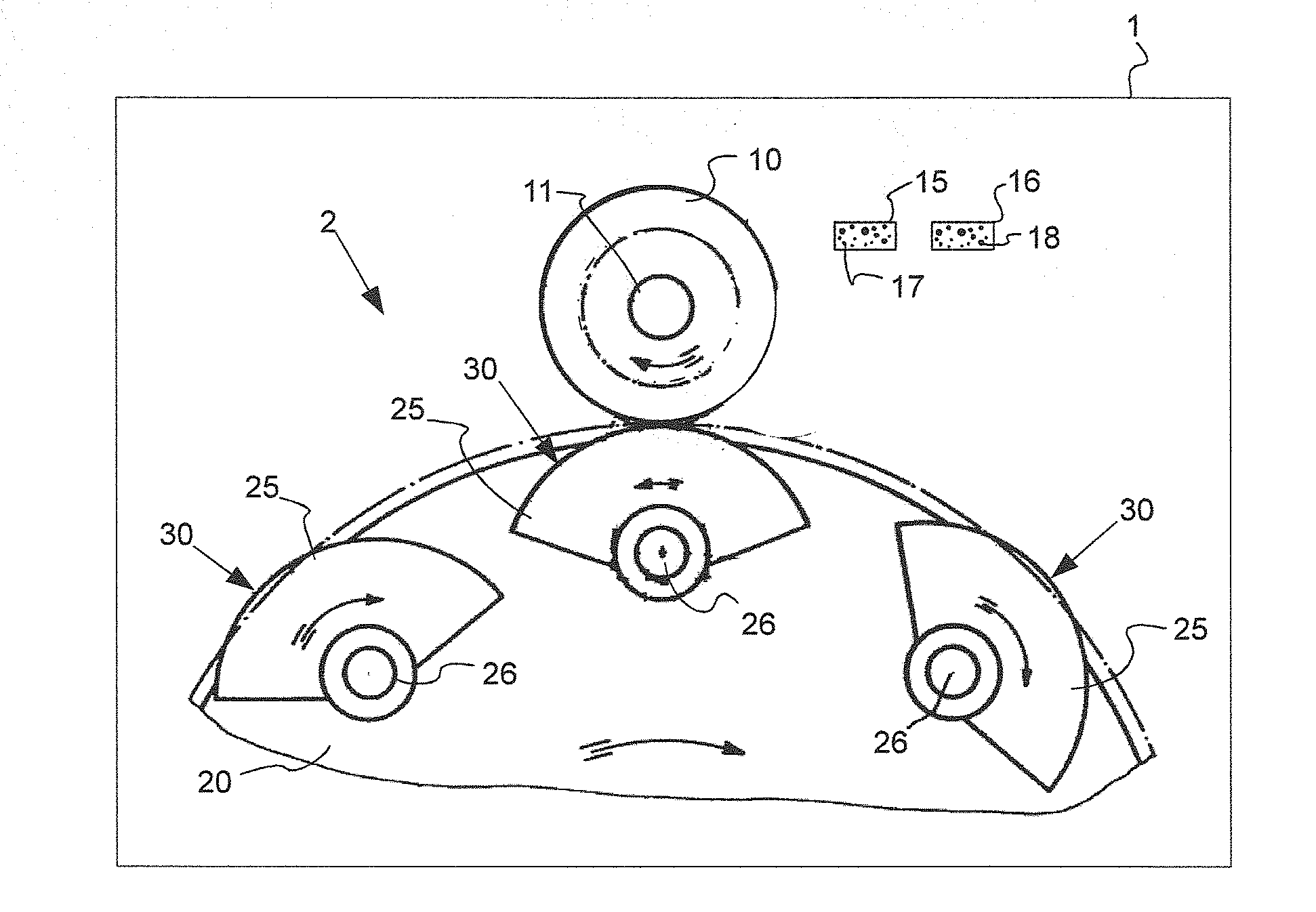Removal device for removal of labels, label and method for applying glue to a label
a technology for label removal and label, applied in the direction of identification means, instruments, paper/cardboard articles, etc., can solve the problems of high cost and/or output of labeling machines, and both possibilities are very elaborate and cost-intensive, and achieve cost-efficient effects, reduce the output of labeling machines, and reduce the velocity of labeling machines
- Summary
- Abstract
- Description
- Claims
- Application Information
AI Technical Summary
Benefits of technology
Problems solved by technology
Method used
Image
Examples
first embodiment
[0050]FIG. 5 shows an example of the removal device 25 in which the third portion 33 is a logo, in particular a trademark logo. Further, the first and second portions 31, 32 form a honeycomb structure. In other respects the first to fourth portions 31 to 34 are implemented in the same manner as described in the
[0051]As a modification of at least one of the first or second embodiments, the third portion 33 can also be implemented as a recess and the fourth portion 34 can be implemented as an elevation. In this case, the marking on the back face of the label 40, which marking is provided by the third and fourth portions 33, 34, is generated with a negative stamp, whereas it is generated in each of the first and second embodiments as a positive stamp.
[0052]According to a further modification at least one of the first or second embodiments, the glue 17 in the first glue accommodating container 15 is a transparent glue, in particular wet glue. The glue 17 can also be cold glue or warm gl...
third embodiment
[0053]FIG. 6 shows a removal device 25 in more detail in a section. The reception face 30 has a first region 27 and a second region 28. The first region 27 is arranged around the second region 28. Thus, the first region 27 surrounds the second region 28. In this embodiment, the second region 28 is implemented as an exchangeable element or pad. The second region 28 has at the sides thereof sloped edges 29. Thus, the second region 28 has the form of a truncated pyramid. The first region 27 is adapted at the edge thereof that adjoins the edges 29 to the form of the second region 28. Thus, in the arrangement shown in FIG. 6, the first region 27 and the second region 28 form a formed closure. Therewith, the second region 28 is securely held in the first region 27. However, the second region 28 can be removed easily out of the first region 27 in case this is desired. As the need may be, a suction belt can be used for this purpose.
[0054]Even if it is not shown in FIG. 6, the second region...
PUM
| Property | Measurement | Unit |
|---|---|---|
| adhesive force | aaaaa | aaaaa |
| transparent | aaaaa | aaaaa |
| size | aaaaa | aaaaa |
Abstract
Description
Claims
Application Information
 Login to View More
Login to View More - R&D
- Intellectual Property
- Life Sciences
- Materials
- Tech Scout
- Unparalleled Data Quality
- Higher Quality Content
- 60% Fewer Hallucinations
Browse by: Latest US Patents, China's latest patents, Technical Efficacy Thesaurus, Application Domain, Technology Topic, Popular Technical Reports.
© 2025 PatSnap. All rights reserved.Legal|Privacy policy|Modern Slavery Act Transparency Statement|Sitemap|About US| Contact US: help@patsnap.com



